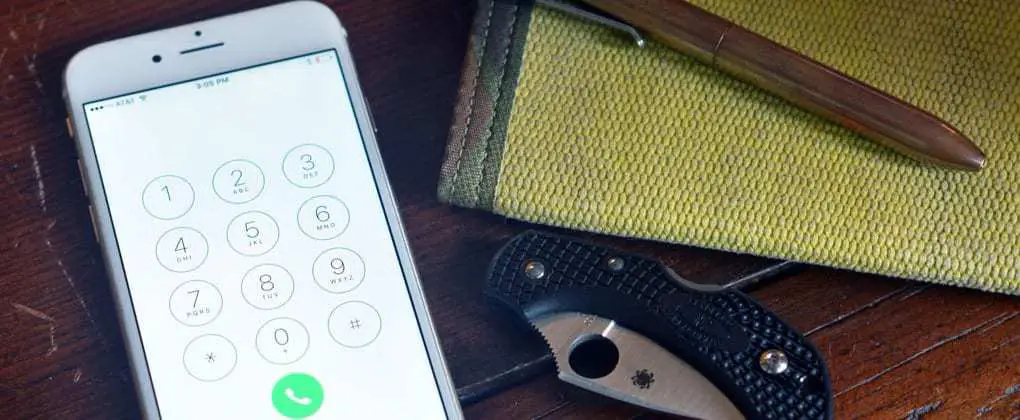In the connected and modern world of 2016, it’s hard to imagine life without a cell phone. But, if you grew up as late as the mid-1980s, your family probably had one home phone number that everyone use, and it was likely connected to a rotary dial phone (hanging in the kitchen? with a super long cord? anyone?). Notoriously slow, especially if the number you were dialing had lots of 9’s and 0’s in it, it was replaced by the electric push-button phone in the late ’80s, followed by the cordless phone in the ’90s.
Even if you kept your phone numbers written down in a small notebook, circling or punching each number allowed your mind to quickly memorize the phone numbers you called the most often.
With the invention of the modern-day cell phone, we no longer have to meticulously dial out numbers. They are available in our saved contacts list or from a simple Google search. (A few times a year someone who actually doesn’t know their own cell phone number crosses our path–which just seems crazy.)

The unfortunate reality is that for many people, having the phone number of someone we need to call is now fully dependent on the technology of our phone working. So many things can go wrong when we put our only way of contacting people through our personal cell phone contacts list. Our phone can be:
- Stolen
- Dropped/broken/submerged in water
- Dead due to a drained battery
- Rendered useless due to a hardware or software malfunction
As a modern gray man, you want to be prepared for the unexpected. Even if your contacts list is backed up on your computer, if it’s not with you, it won’t help. Borrowing a strangers phone is worthless if you don’t know what number to call.
Rekindle the lost art of knowing phone numbers and make sure you have the numbers you need in case of an emergency or if something goes wrong with your phone.
Have your emergency contacts written down and with you at all times

We know that writing things down creates “mental lifting” to help apply what you write down to your memory. By listing out your emergency contacts, you can reference your pocket notebook when dialing. Instead of looking up a contact’s name (or telling Siri to call them), you are going back and forth, looking at your notes and then typing out that number, which helps with the mental lifting you need to apply the numbers to memory.
Additionally, by putting the contact’s relationship to you, you are allowing someone to call them for you if you’re unable to (e.g. you’re in a bad car accident).
A few places to put your list of numbers:
- Write it in your pocket notebook: A pocket notebook is such a critical piece of your EDC, so you should have it on you at all times. Flip to the last page and write out the person/place, relationship, and phone number. You’ll have to repeat the process every time you switch out notebooks, but writing them down over and over again will help you memorize them even faster
- Carry it in your wallet: Cut a 3 x 5 card to size so it fits into your wallet and list out person/place, relationship, and phone number
Force yourself to type in phone numbers on your cell phone

Using your list of numbers that you made, an easy and practical way to start memorizing phone numbers is to default yourself to use the keypad instead of using your “Favorites” or “Contacts” list.
When you go to call that number, the phone number will be replaced with the persons name that is saved in your contacts list, so it’s an easy way to verify that you dialed the right number.
Alternately, replace the name of the person with their phone number so your mind has to map the person to the number.
Broaden the numbers (and addresses) you memorize
After you get the hang of memorizing your close friends and family, branch out and be intentional about memorizing other important phone numbers and addresses. Ideas include:
- Utilities: City water (if a water main breaks), power company (report power outages) and the gas company (we had a car come through the back fence and break a gas line–an extremely dangerous situation)
- Poison Control: Having to Google the right number when faced with a potentially serious situation can be avoided by knowing the number already
- Neighbors: Taking the time to get to know your neighbors is important, so being able to contact those you share your space with is always a good idea
- Nearby Hospitals: What are the three closest hospitals/emergency rooms?
- Pastor/Church: When an unforeseen circumstance strikes, our church community can be the place we need to turn to first
- Coworkers: Whether you like them or not, we spend a lot of time with our coworkers and being able to communicate with them can be important
- Doctors: Is your child having a reaction to an antibiotic? Are your spouse’s symptoms concerning you? Make sure you have the knowledge to contact non-emergency medical help for yourself and those you love
Being prepared for the unexpected means utilizing technology, but knowing how to function when it doesn’t work. Let us know how else you try to practice modern gray man principles.

